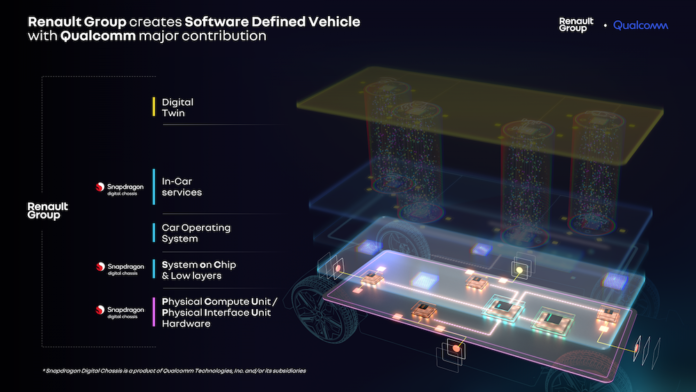
New directions for software defined vehicles
French car-maker Renault has announced plans work with Qualcomm and Google respectively to create an electronically driven car, steered by software. Qualcomm has been commissioned to create the centralised computing design, a sort of electronic chassis, for the for the SDVs. In a statement it gives details of the high-performance systems they will build to support the launch in 2026. These include centralising functions such as advanced driver-assistance system (ADAS), telematics, connectivity, safety and cybersecurity. The car’s Android cockpits will create an onboard experience that is more “immersive and personal”.
It has hired Google to create a software-defined vehicle (SDV), reports Telecom TV. The brief to develop special “onboard and offboard software components” for the SDV, along with a digital twin of the vehicle whose artificial intelligence will help it realise the potential for new in-car services and off-board applications. Google Cloud technology will be used to capture and analyse data for tasks such as predictive maintenance and fault rectification, along with the usual repertoire of missions that digital twinning can accomplish. Car makers capture a billion pieces of data every day across manufacturing sites, from connected production lines to the supply chain. All this data has to be hosted and analysed in the cloud by Google.
The phrase “personalized onboard experience” alludes to gathering information to “adapt to driving behaviours”, tip them off about often-used destinations such as EV Charging Stations and compile a report on the owner’s driving that can be sent to insurance companies, based on the drivers “actual usage and driving behaviours”. This is all for a “better understanding of customers’ needs” and “highly personalised services according to their expectations, in compliance with the security and privacy norms that apply”.
The Renault Group’s drivers describe this move as a Move to Cloud strategy. “This collaboration on cloud computing, initiated in 2018, is accelerating with the creation of a Digital Twin,” said Renault Group’s statement. This transform of vehicles not only serves the customers’ needs as they evolve but increases the residual value and after-sales retention, which are two key drivers of the car maker’s financial performance, said Renault.
Google’s aptitude for rapid development gets the car to the end of production line quicker. Every step, from model design to market launch, via production, will be overhauled and reviewed in order to bring more value to the customers, according to Luca de Meo, Renault Group CEO. “With Google, we are going beyond mere cooperation: a software champion and a mobility champion are joining forces to create game-changing technologies.”


